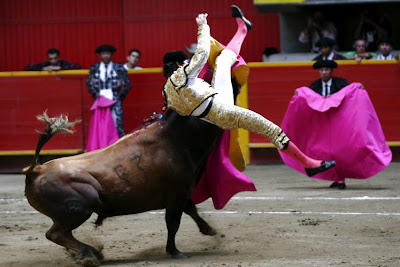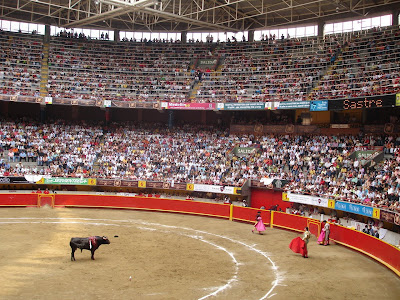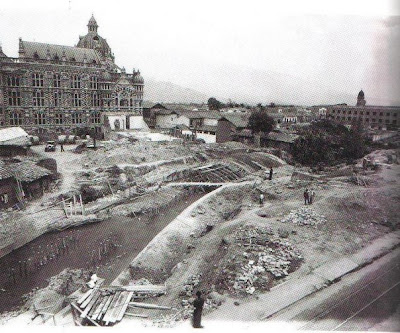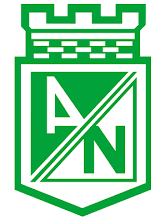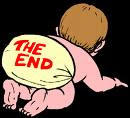
Botero turns up the volume at the Naples Museum of Art
By charles runnells
www.crunnells@news-press.com
"The Orchestra"
Before Fernando Botero, the world-renowned artist, there was just Fernando Botero, the poor Colombian teen who loved to draw.
Then, one day in 1956, Botero tried something different while sketching a mandolin - something that proved career-changing.
On a whim, the budding artist shrank the mandolin's sound hole to a pinpoint.
The result was almost magical, recalls Botero, whose traveling art exhibit comes to Naples this weekend.
The instrument suddenly transformed before his eyes. It took on all-new proportions and became swollen and plump, sensuous and ripe.

Botero didn't know it yet, but he'd just stumbled upon his signature style.
He'd soon take that "fat" look and apply it to stout human and animal figures with wide necks, thick ankles and bountiful waist lines. And just like that mandolin's sound hole, he shrank the figures' features into tiny eyes, tiny mouths, tiny breasts - making everything else look all the bigger.
"I did this by chance, you know," Botero says in a telephone interview from his Colombian house (he also owns homes in Italy, the U.S. and elsewhere). "Then I started to reflect on what happened in the sketch. And then I developed my style."
That unique vision eventually led to his work becoming some of the most popular, instantly recognizable art in the world.
When you see a Botero still-life or portrait, you know it, says Myra Daniels, CEO of Naples' The Philharmonic Center for the Arts.

"You can stand across the room and see his work, and you know it's him," she says. "It speaks loudly and in a big voice."
A traveling exhibit of that plus-sized work opens Saturday at the Naples Museum of Art. It's the biggest U.S. retrospective of Botero art in 34 years.
"This is probably the biggest show Naples has ever had," Daniels says. "And the weightiest one, too. One of his sculptures weighs more than a ton."
Botero is one of the most sought-after artists in the world, she says. People love his whimsical images, subtle satire and utterly unique style.
He's also one of the most misunderstood artists. Botero says many people know him simply as "the artist who paints fat women," but there's more to his world than grotesquely oversized - OK, "fat" - women. There are fat men, fat children, fat cats, fat landscapes, fat fruit, fat furniture. In fact, everything in Botero's world is huge and straining at the edges, voluptuous and larger than life.

These aren't mere figure studies, though. Botero uses those fleshy figures to examine everything from tender lovers to pompous leaders, shocking world events to misery in Latin America. And it's all with an eye toward humor or social awareness.
Botero says he's simply distorting the human body to create a unique view of the world. He applies the idea of "volume" in the same way Picasso applied fragmented angles and Monet applied blurred dots and brush strokes.
He doesn't have a fat fetish, he says. He's just following his muse.
"Extreme deformity has a tremendous beauty," he says. "All the great, great art is deformed.
"I'm just a painter who is obsessed, or who feels very strongly that volume and tactile values are very important in the enjoyment of art."
The Naples exhibit features 100 baroque-inspired pieces from Botero's personal collection. Many of them have never been displayed before.
They include such well-known pieces as "Adam" and "Eve," "Dancers" and the 3,000-pound bronze statue "The Smoking Woman." In the latter piece - parked outside the Naples museum's front door - a nude woman reclines absently on her stomach, a towel beneath her, a cigarette dangling from one hand.
"Perhaps it is one of the most popular pieces I have done," Botero says. There are three copies in the world, including one in Monte Carlo.
Other exhibit pieces take on war and misery in Botero's hometown of Medellin. Bullets pierce a barefooted man in the Goya-esque "The Wall (Execution)." The autobiographical "The Widow" shows Botero's mother standing wearily beneath a clothesline as her three rambunctious children play underfoot.
Another piece, "The First Lady," portrays an unnamed president's wife of an unnamed Latin American country. The plump first lady perches clumsily on her equally plump horse, the woman's expression detached and arrogant.
It's not a flattering portrait.
"Of course, there's always the satirical element in the portraits," Botero says.
The Naples exhibit doesn't include his more recent, controversial work - namely, his series of paintings on the abuse of Iraqi detainees in Abu Ghraib prison. The show was put together before he started pursuing those topics, Botero explains.
"It's a pity that wasn't part of it," he says.
Botero, now 76 years old, has been following his unique (and somewhat chubby) muse for more than five decades now. The artist says he's still exploring volume and how changing the volume of an object changes its appearance.
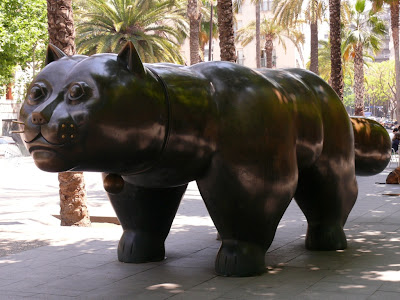
It still fascinates him.
"Volume has been neglected in the art of the 20th Century," he says. "Most paintings are flat.
"I was always interested in volume - creating the illusion of space and volume, tactility and sensuality. I found a way to express volume, between the generosity of the outline and the smallness of the detail."
That's all fine and well, but Botero admits he may be getting too deep for many casual observers. For those people, his artwork will always be less than the sum of its plump parts.
Botero realizes he may be fighting a losing battle.
"The thing is, people still know me as 'the man who paints fat ladies,'" he says and chuckles. "What can you do?"
Naples Museum of Art
The museum is a reflection of the unique spirit and generosity of South Florida.
We urge you to order your tickets directly from our website, www.thephil.org, or from our Customer Service Center at (239) 597-1900 or (800) 597-1900 .



